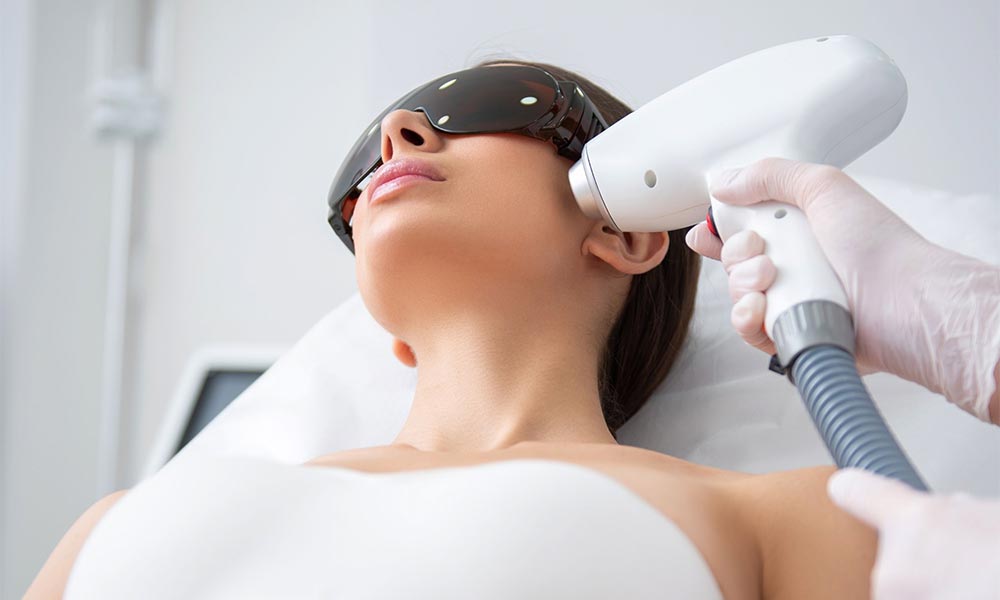Achieving flawless, radiant skin is a common goal, but pigmentation issues often get in the way. Dark spots, uneven skin tone, and other pigmentation concerns can be frustrating, but advances in non-surgical treatments provide effective solutions. Here, we’ll explore the process of removing pigmentation through modern, non-invasive procedures, detailing the steps to help you achieve clearer skin and restore your natural glow.
Key Steps in Non-Surgical Pigmentation Removal
The process of pigmentation removal starts with a consultation and thorough skin assessment. A dermatologist evaluates your skin type, the severity of the pigmentation, and the cause, which could stem from sun damage, hormonal changes, or post-inflammatory hyperpigmentation from acne. This evaluation is essential to create a treatment plan tailored to your needs.
Next comes the application of a non-invasive treatment, commonly using laser technology, chemical peels, or light therapy. These methods precisely target pigmented areas, breaking down excess melanin to fade dark spots without harming surrounding skin. To ensure comfort, a cooling gel or numbing cream may be applied. The number of treatments needed depends on the type and depth of pigmentation.
Laser Technology for Pigmentation Removal
Laser technology is a key player in removing pigmentation. Specific wavelengths of light penetrate the skin and selectively target pigmented areas. The laser energy is absorbed by melanin, the pigment responsible for dark spots, freckles, and uneven tone, breaking apart the pigmented cells. Over time, the body naturally processes these damaged cells, leading to a brighter complexion.
Laser treatments, such as Q-switched or Pico lasers, are highly effective in treating pigmentation like melasma, sunspots, and age spots. These lasers offer precision and leave surrounding tissues untouched, making them a safe and reliable choice for deep-rooted pigmentation issues.
What to Expect During a Treatment Session
A pigmentation removal session is generally straightforward. After the skin is prepped, the chosen treatment—whether laser, chemical peel, or light therapy—targets the pigmented areas. Laser treatments may feel like tiny pinpricks or a mild tingling sensation, while chemical peels may cause a slight burning feeling as they exfoliate the skin.
A session typically lasts 20 to 45 minutes, depending on the treatment area’s size. Post-treatment, the skin may be slightly red or swollen, but this subsides within a day or two. Following aftercare instructions, such as avoiding sun exposure and using gentle skincare products, ensures the best results.
How Non-Invasive Treatments Target Pigmentation
Non-invasive treatments like lasers and light therapies focus on melanin, leaving surrounding skin unharmed. These treatments precisely break down excess melanin in pigmented areas, minimizing the risk of side effects like scarring or further discoloration.
Pico lasers, for example, can penetrate deep into the skin to treat stubborn pigmentation without causing excessive heat, making them a safe option for all skin types. This precision reduces the likelihood of damaging surrounding tissues, making these treatments safer and more effective.
Number of Sessions Needed
The number of sessions required in the process of pigmentation removal varies depending on the severity and type of pigmentation being treated. On average, patients may need between 3 to 6 sessions to see significant results, though some cases of superficial pigmentation may only require 1 or 2 treatments. Deeper or more resistant pigmentation, such as melasma, often requires a more extended treatment plan with periodic maintenance sessions.
Sessions are usually spaced about 4 to 6 weeks apart to allow the skin to heal and for the pigmentation to fade between treatments. Regular follow-up appointments will allow your dermatologist to assess progress and adjust the treatment plan as necessary.
Post-Treatment Care
After undergoing pigmentation removal, proper post-care is essential. Avoiding sun exposure is crucial to prevent further pigmentation, and wearing a broad-spectrum sunscreen with SPF 30 or higher is recommended. Hydrating and soothing products, such as hyaluronic acid serums, help support skin healing, while harsh exfoliants should be avoided.
Variations in Pigmentation Removal for Different Skin Types and Concerns
Different skin types and pigmentation concerns require customized approaches during the process of pigmentation removal. For example, individuals with darker skin tones may be more prone to post-inflammatory hyperpigmentation (PIH), so gentler treatments or lasers designed for darker skin are often recommended. Lighter skin types, on the other hand, may respond more quickly to certain lasers or chemical peels.
Specific concerns, such as melasma, require careful management, as the condition can worsen with the wrong treatment. Targeted therapies such as low-energy lasers or light peels are preferred to avoid exacerbating the condition.
Top Non-Surgical Methods for Pigmentation Removal
The most effective non-surgical methods in the process of pigmentation removal include laser treatments, chemical peels, and light-based therapies like IPL. Laser treatments, particularly Pico and Q-switched lasers, are renowned for their ability to target deep pigmentation with minimal damage to surrounding skin. Chemical peels work by exfoliating the outer layer of skin, encouraging the renewal of fresh, pigment-free cells.
Light therapies, such as IPL, use broad-spectrum light to target pigmentation and stimulate collagen production, improving skin texture alongside fading dark spots. For many patients, a combination of these therapies offers the most comprehensive results.
Saying goodbye to pigmentation and achieving a clearer complexion is now more accessible than ever, thanks to the advancements in non-surgical treatments. The process of pigmentation removal offers multiple safe, effective options tailored to individual skin types and concerns. From laser treatments to chemical peels, there’s a solution for everyone seeking a radiant, even skin tone. With proper assessment, personalized treatment plans, and diligent post-care, you’re well on your way to enjoying a flawless complexion.





